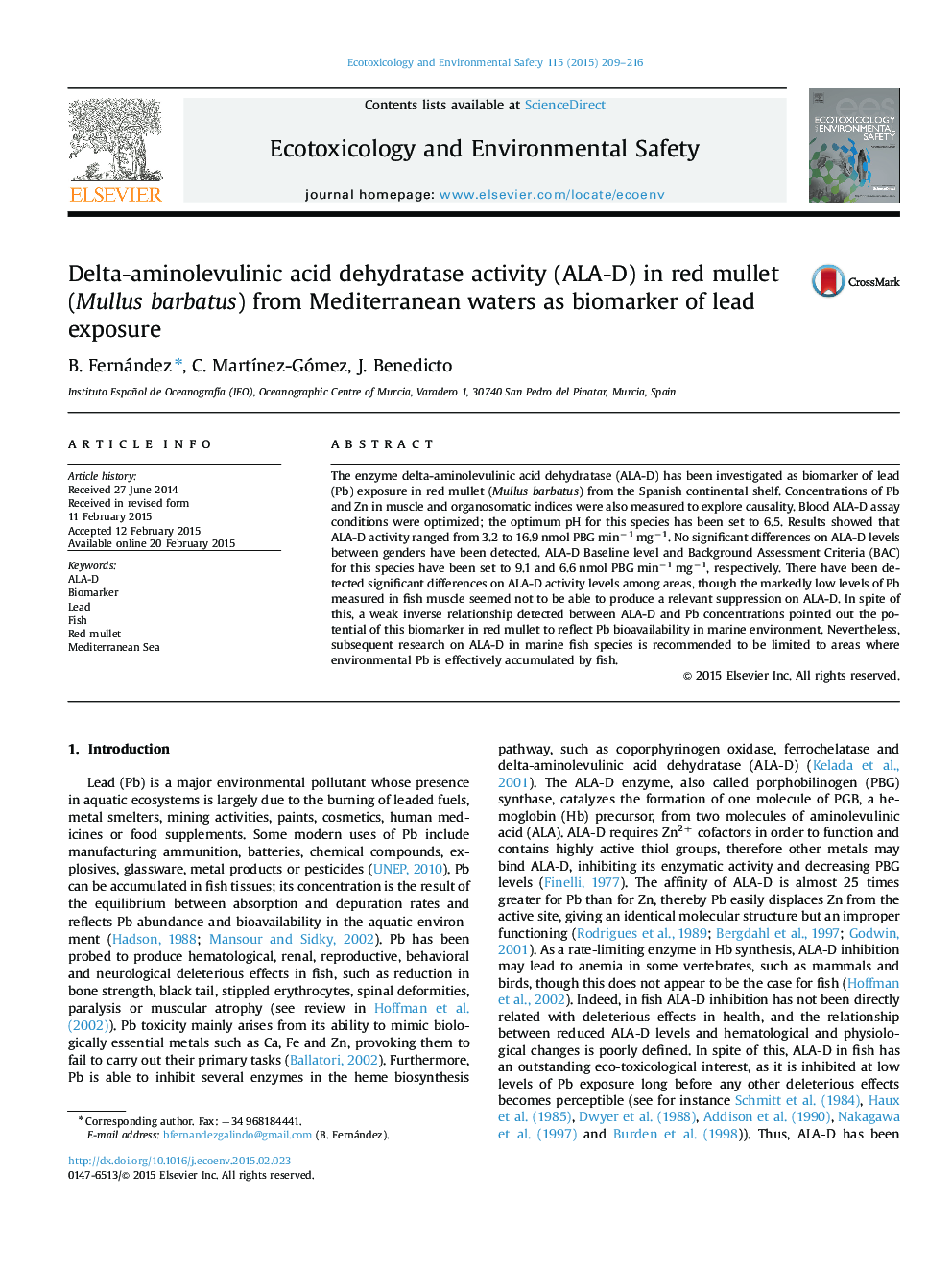| Article ID | Journal | Published Year | Pages | File Type |
|---|---|---|---|---|
| 4419738 | Ecotoxicology and Environmental Safety | 2015 | 8 Pages |
•Delta-aminolevulinic acid dehydratase (ALA-D) was investigated in red mullet (Mullus barbatus) from the Mediterranean coast.•Neither gender nor organosomatic parameters (CF, GSI, HSI) influenced ALA-D levels observed.•A significant difference in ALA-D activity levels among locations was found.•A weak inverse relationship was detected between ALA-D levels and Pb concentrations in fish muscle.
The enzyme delta-aminolevulinic acid dehydratase (ALA-D) has been investigated as biomarker of lead (Pb) exposure in red mullet (Mullus barbatus) from the Spanish continental shelf. Concentrations of Pb and Zn in muscle and organosomatic indices were also measured to explore causality. Blood ALA-D assay conditions were optimized; the optimum pH for this species has been set to 6.5. Results showed that ALA-D activity ranged from 3.2 to 16.9 nmol PBG min−1 mg−1. No significant differences on ALA-D levels between genders have been detected. ALA-D Baseline level and Background Assessment Criteria (BAC) for this species have been set to 9.1 and 6.6 nmol PBG min−1 mg−1, respectively. There have been detected significant differences on ALA-D activity levels among areas, though the markedly low levels of Pb measured in fish muscle seemed not to be able to produce a relevant suppression on ALA-D. In spite of this, a weak inverse relationship detected between ALA-D and Pb concentrations pointed out the potential of this biomarker in red mullet to reflect Pb bioavailability in marine environment. Nevertheless, subsequent research on ALA-D in marine fish species is recommended to be limited to areas where environmental Pb is effectively accumulated by fish.
